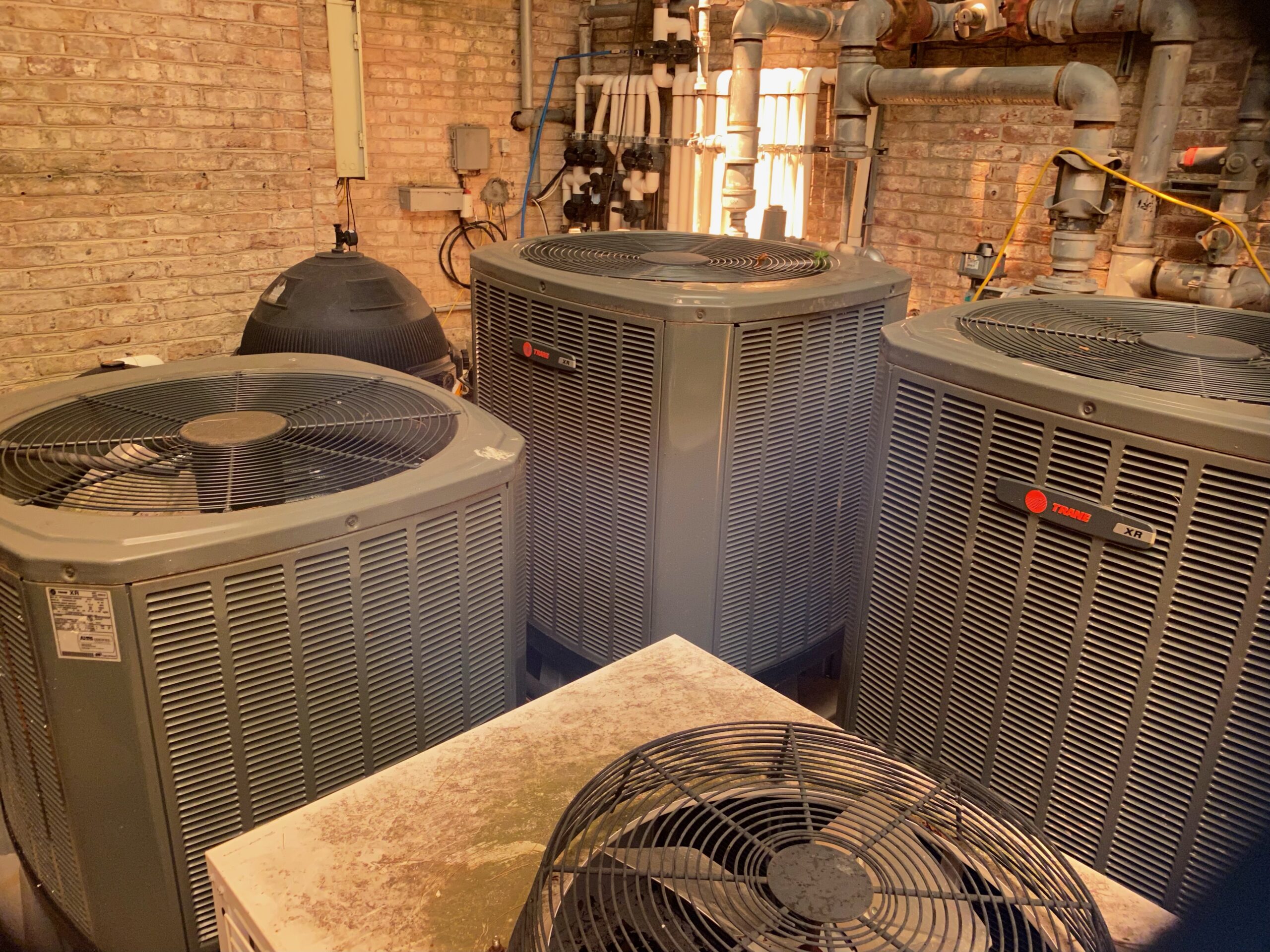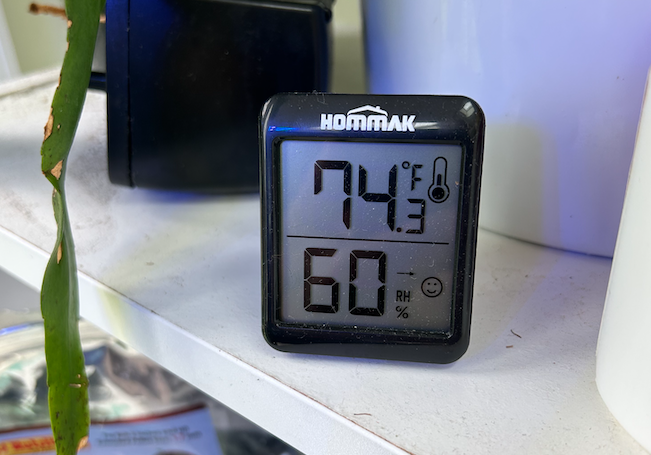In terms of simple things about the hobby, at first glance, it would appear that understanding temperature would be at the top of the list. It is simple, in that since the average temperature on natural coral reefs ranges from 73-82 degrees Fahrenheit, all that is required is to keep a tank at that temperature, and even easier if you take the temperature that most hobbyists do 77-78 and keep a tank there.
Unfortunately, as with most things in the hobby, it is just not that simple. For various reasons, I know of more tanks being wiped out by temperature mishaps and their related equipment than just about any other reason. Personally, I have lost two tanks due to overheating, once when the chiller failed and once when the heaters overheated, so I feel I have a pretty good understanding of the potential problems keeping a proper temperature in a reef tank entails.
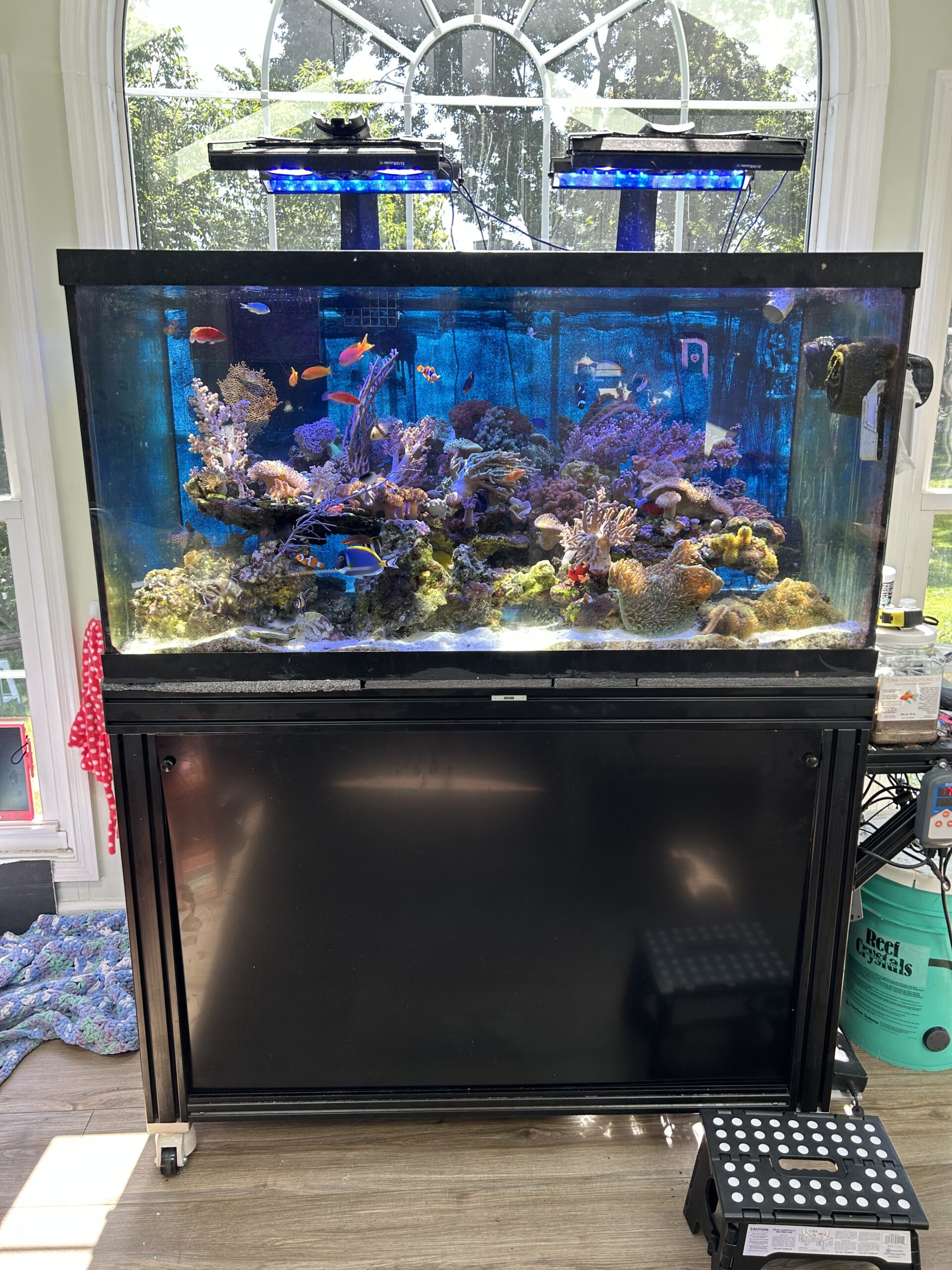
So why is managing the temperature of a tank so difficult? Since most of us keep our homes in the 70-75 degree temperature range, keeping a tank close to that temperature should seemingly be easy. Unfortunately, this is not the case for a couple of reasons. The first of these is that many of the pieces of equipment that we use on our tanks tend to add heat to the water. Pumps, powerheads, and especially lights all add heat to the tank to one degree or another.
When the use of metal halides was the standard on most tanks the amount of heat they produced was their main drawback, so most hobbyists had to also run a chiller of some type on their tanks to keep the heat from overwhelming the tank. Now that LED lighting is the standard on most tanks, the amount of heat produced by the lights has decreased. However, LEDs still produce some heat, but unlike halides, this heat is often disbursed into the room rather than into the tank.
While the amount of heating of the tank has been diminished, these lights still produce heat and this helps to increase the temperature of the tank and this needs to be dealt with. Obviously, this is more problematic during the hot seasons of the year, but even in the winter in a closed room, this can be problematic. And the heat produced by all of the other equipment that adds to this potential overheating problem also needs to be managed as well. In the colder months, this heating is usually not an issue, but instead, there is often a need to add supplemental heating to the tank. The problem here is that many of the heaters on the market are not reliable, break easily, or have a potential risk for electrical issues.
In my opinion, heaters are still one of the weakest links in the hobby.
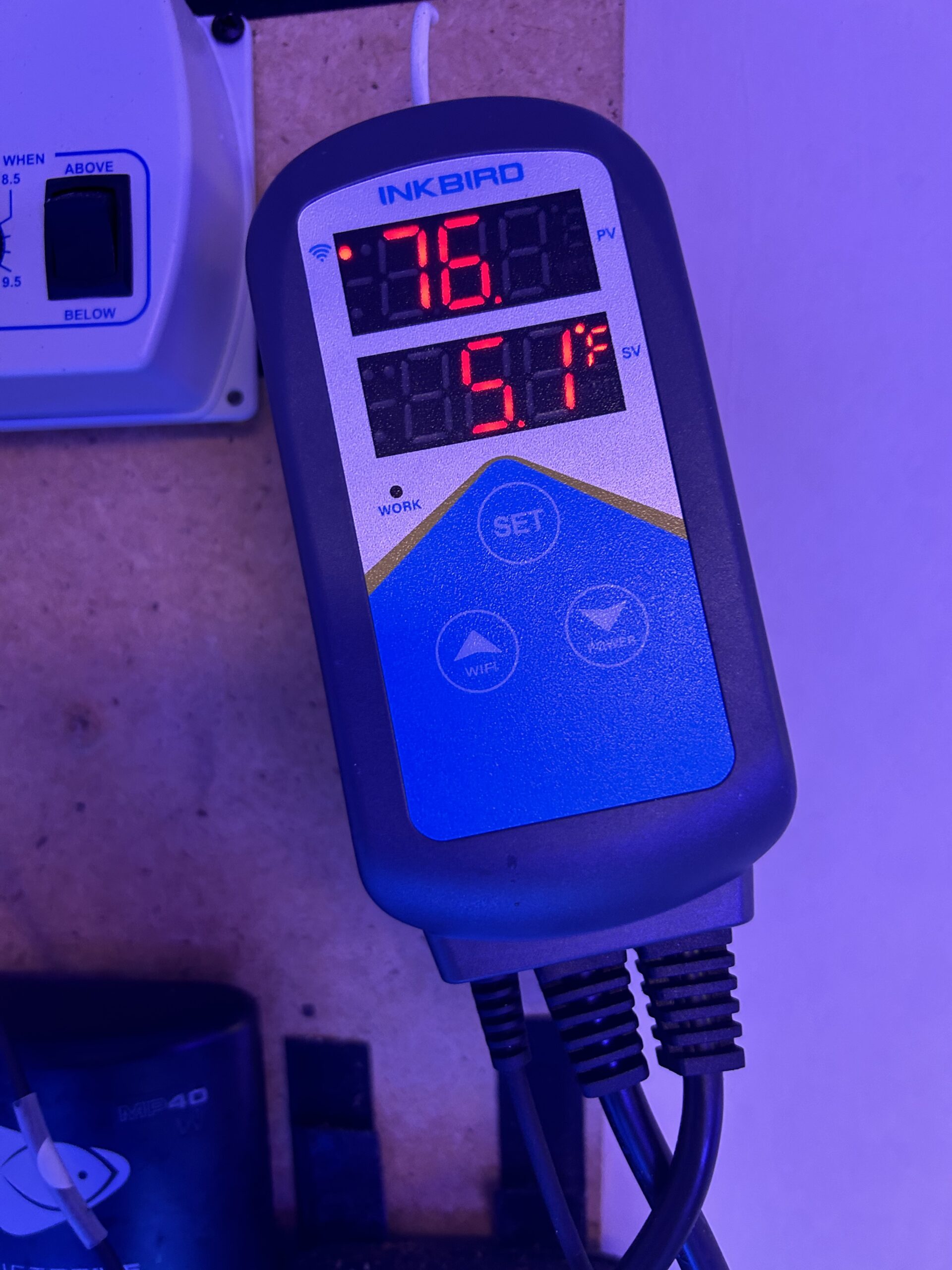
Heating
Let’s deal with heating the tank first. Corals and the fish in our tanks all come from tropical water and do best in tanks where the water is between 76 and 80 degrees. For this reason, a heater of some type needs to be employed, except in the warmest locations. Over the years heaters have overheated my tanks, failed completely, cracked, spewing their toxic contents into the water, had a seal crack, or had the electric cable crack, each time resulting in shocks or near electrocutions.
For these reasons, whether you are starting or have been doing this for a long time, do not try to save money by buying a lower-quality heater. I also suggest that instead of buying one large heater, two smaller heaters should be used. This is because if one heater fails and starts to overheat the tank it should not be strong enough to heat it to the point where it is lethal for the tank’s inhabitants. I also suggest that even though most heaters come with a built-in thermostat the heaters should still be connected to an additional external thermostat. This bit of redundancy will further lessen the likelihood of the heaters overheating the tank.
How many heater watts per gallon?
The general recommendation for how much heating is needed is 5 watts per gallon for a tank 55 gallons in size or less and 3 watts per gallon for tanks larger than this. So a 100-gallon tank will require 300 watts in heating capacity and a 20-gallon tank will require 100 watts of heating capacity. This much heating capacity is what is needed if the room is heated or cooled to an average of 70-75 degrees. If the room is kept hotter or cooler the heating should be adjusted accordingly.
I would love to give a recommendation for the best heater here, but I have had both good and bad luck with virtually every heater out there, so I would ask around and check out reviews on the internet and select accordingly. Also, keep in mind that heaters do not last forever. In my experience, a good heater lasts from 3-5 years. One last word on heaters, if they have been off for a season, like summer, test them before starting them back up during the colder seasons. Failures seem to occur most frequently after they have been off for a significant period of time.
In my own tanks, I try to keep the temperature around 76 degrees but it varies by season. In the summer I try to keep the tanks at 75 so that if the power goes out it might buy me some time for the temperature to get too low in the tanks. Conversely in the winter, they are kept at 77 degrees for the same reason. I should also note that as with most aspects of my tanks, they do better when the temperature is kept stable. I have found that stability in regards to temperature is in the 1-2 degree variance during the course of the day. This sometimes takes some manipulating of the fans, air conditioning, and heaters, but I have found it is worth the tinkering to make it work.

How to cool a reef tank
While heaters have been a necessity since the hobby began, the need for chillers or other means to cool our tanks has only been around since the use of metal halides and LED lighting became the main methods for lighting tanks. Since most hobbyists now light their tanks with LEDs, the need for chillers has dropped dramatically, therefore I will not discuss them here. I should also note that some metal halide companies have also improved their products so that they no longer produce the amount of heat that old halides used to produce. So, it is now even possible to use metal halide lighting without the need for a chiller. However, in many setups a means for cooling a tank, at least a little is still necessary.
For my own tanks evaporative cooling, (through the use of fans,) is how my tanks are kept cool along with directing the air conditioner vents to blow across the tanks. Using these methods the tanks are kept below 80 degrees even during the warmest periods of the year. To optimize the cooling effect of the fan, the fans blow directly across the surface of the tank. To further increase this effect, the powerheads in the tank are directed to maximize surface agitation and potentially increase the surface area of the water that the fan is blowing across. These fans are on 24/7 during the summer, but only during the day when the lights are on once the temperature drops.
While still consuming significant electricity, the use of fans uses less electricity than the chiller and does not require the extra plumbing that a chiller does. While the fans have done a great job of keeping the tanks cooler, they do produce the unwelcome side effect of increasing the humidity in the house. Excess humidity can be especially troublesome in that in the summer it makes the house feel warmer and in the winter, it produces condensation on the cold windowsills. Even more troubling is that over time this extra moisture can lead to mold and mildew occurring.
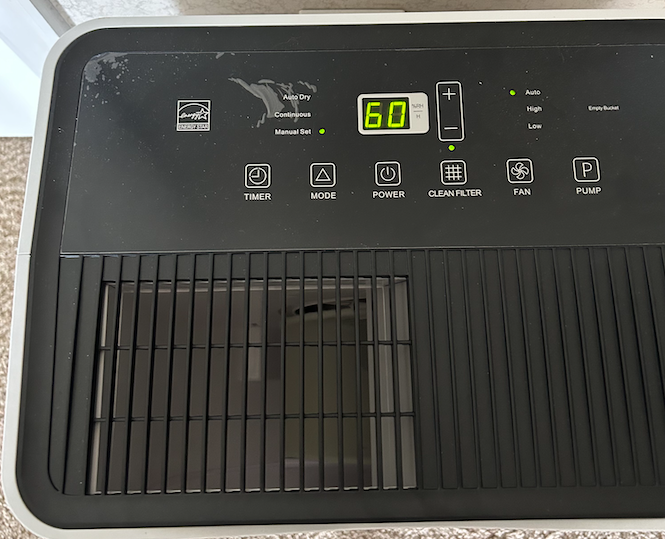
Most experts recommend a relative humidity level of between 40-55% in a home. A fifty-gallon tank can evaporate one gallon of water per day. While most whole-house air conditioning systems can handle this much extra humidity, if you have multiple tanks or large tanks the amount of moisture produced in the house can well exceed what these units can remove. In my own home, with over 900 gallons of tanks in operation the humidity level in the house got to almost 70% before extra dehumidification was added.
Currently, there are four dehumidifiers in use in the house to keep the relative humidity level at the desired 45%. One is employed in each of the rooms housing a tank and an additional large unit runs at the top floor of the house, to keep humidity from accumulating on the upstairs windows. These units remove over 5 gallons of water per day and require being emptied every day. There are units on the market that will pump the water as it accumulates into a drain and these can make maintaining these units quite easy. It should also be noted that as these units run they do produce some heat and accumulate dust on their filters, and they produce more heat the dirtier the filters become.
To get optimal efficiency from these units the filters need to be cleaned at least quarterly. These units have been purchased at various times over the past decade. The more recently purchased units are significantly more efficient than the older units. Heating, cooling, and dehumidification are some of the simplest aspects of keeping a reef tank. When functioning properly they help keep the environment stable and help the tanks thrive. But when they fail the results can be catastrophic, so the best units available should be purchased. As the old adage goes you get what you pay for, this is especially apropos in regards to aquarium heaters.
